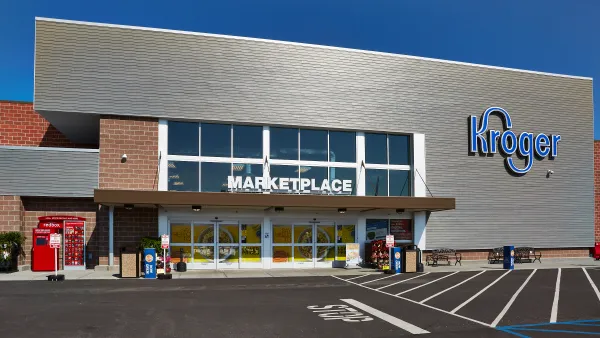Today’s customers expect brands to recognize their preferences while offering a personal connection that feels genuine and tailored to their needs. A handful of companies have found a formula that works.
Sephora, Famous Footwear and PetSmart are unlikely peers, but they have one thing in common. These popular retail brands have well-executed loyalty programs that lean into their customers’ interests and preferences, according to David Slavick, co-founder and partner with Ascendant Loyalty.
Sephora members earn points that are redeemed for free items, encouraging customers to sample and expand the overall products they’re buying. Famous Footwear’s program has different customer tiers based on annual spend, including additional benefits for using its credit card. PetSmart’s personalized program is based on the customer’s pet, has community engagement through adoption events and provides complementary services like grooming, Slavick said.
The programs offer more than just points and discounts.
“It’s that personalized, experiential recognition and reward that consumers are asking for if they’re sharing their information with the brand,” he said.
It confirms what surveys indicate: Financial rewards are important, but consumers crave personalized experiences. In Deloitte’s 2024 Consumer Loyalty Expectations and Preferences report, nearly three-quarters of respondents nominated personalized experiences or rewards as important features in a loyalty program.
However, there’s still room for improvement, with only 3 in 5 respondents in the Deloitte survey satisfied with the personalized experiences they’re currently offered.
The key is personalization based on customer data and segmentation as well as a specific understanding customer life events and preferences to deliver relevant and valuable offers, said Slavick.
“Consumers are saying,'Show that you value me and apply some level of personalization to give me what I want,' as opposed to just being a guessing game,” he said.
Yet consumer behavior and preferences are like shifting sands, always changing and sometimes unpredictable. To steer a successful loyalty program, brands must stay in touch with their customers and ensure they’re desirable and relevant.
“It’s understanding what’s going on with customers, figuring out how you’re going to approach them, what you’re going to communicate and how you can give value to them,” Slavick said.
Leaning into data to drive personalization
Personalization relies on using data effectively to know whether someone has a fish or a dog as a pet, or prefers Converse over Crocs. Consumers will give something for this benefit, with just over half of Americans willing to share their data for more personalized experiences, the Deloitte survey noted.
However, it’s of little value if the customer information can’t be translated into personal, meaningful interactions. In many cases, a customer data platform is needed to build a true 360-degree view of the customer and drive segmentation and personalization.
When done appropriately, it connects all the components and links to different loyalty technologies as the control center, according to Slavick.
“A CDP helps you understand the individual customer segment journeys to then build your communications plan by customer segment and reach them during their journeys,” he said.
However, loyalty programs don’t need to start with a CDP, and Slavick warns businesses against falling into the trap of thinking they must set up a complex, centralized platform to have personalization in their loyalty programs.
“To do loyalty, you don't have to get a CDP in place — that’s like hitting the nail with the proverbial sledgehammer,” he said.
He recommends brands start by identifying and learning about the customer and building a permission-based capability to deliver some outcomes in the form of value or growth and working towards adopting this type of platform.
“By creating incremental momentum, you've proven the data is in hand, you're doing a good job of driving your business performance, and with that incremental lift in profit, you can fund the CDP,” he said.
The human connection: More than a transactional loyalty program
Brands that want a mature loyalty program need to forge deeper emotional connections with consumers, according to Lia Grimberg, principal and consultant with Radicle Loyalty. It requires mature data strategies that offer complex personalization levers beyond just tailored communications and offers.
Some brands are working from this playbook, building emotional loyalty through purpose-driven experiences. REI Co-op has a significant focus on environmental initiatives in its loyalty program. Walgreens rewards customers for health-related sign-ups, such as doctor’s visits or programs to quit smoking, and purchases, including from nutritionists or therapists through its loyalty program.
Similarly, Nike’s loyalty program centers on fitness goals and tracking customer progress. It doesn’t offer a traditional points-based system but instead rewards customers with personalized content.
In each case, the loyalty program aligns with the brand’s overall values and provides a non-transactional way to earn rewards, which helps drive customer satisfaction and engagement, Grimberg said.
“This approach is more cost-effective and drives incremental behavior by providing value-added experiences,” she said.
By contrast, a loyalty program that’s highly transactional, such as McDonald’s, leaves little scope for being innovative and may just be rewarding people without driving additional purchases, Grimberg noted.
Focusing on transactional behavior rather than aspirational or values-based rewards may not deliver growth because it doesn’t drive truly incremental behavior, such as new trips or increased basket for a particular shop.
“Because loyalty is so expensive, you don't want to be paying customers for purchases they were going to make anyway,” she said.
The goal is to leverage data and technology to drive personalization while fostering a human connection to the customer. Deloitte’s research shows human touch can deepen relationships and help brands respond to demands for increased personalization.
Grimberg said luxury brands can pull off exceptional personal touch because they keep detailed notes on their customers, who tend to be smaller in number and valuable individually.
For brands not in this position, it takes a collaborative effort between loyalty managers, analytics teams and other stakeholders to turn data into actionable insights that deepen the customer relationship.
“Use the technology and leverage that customer information so that the communication to the customer is truly actually personalized in a way that the customer expects,” she said.




















